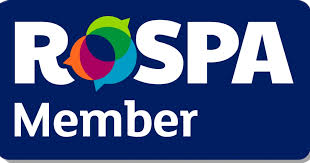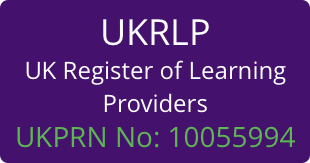
As JISC says, “e-Learning is fundamentally about learning and not about technology. Strategic development of e-learning should be based on the needs and demands of learners and the quality of their educational experience.” I would add to this that effective e-learning is also about meeting the employers needs and not about superfluous visual or auditory affects, but the quality of the content and user engagement to effectively meet the learning objectives, whether set by an employer or learner themselves.
With so much discussion going on about what is the current or next big thing in e-learning authoring, e.g. gamification and augmented reality, it easy to lose touch with what the demands of learners and employers are and what is a quality learning experience?
Whether you’re commissioning an online course to meet a specific workplace requirement or buying off-the shelf e-learning, the quality of the outcomes for employers and learners should be based on the fundamental criteria as below and not whether it has the ‘wow’ factor.
The course meets your learning objectives
This is the most important factor and can only be evaluated if you are clear exactly what the learning objectives are.
The balance between delivery of information, interactivity, visual effects and self-assessment activities is appropriate for learners
This is tricky as we all have different likes and dislikes. I have on many occasions evaluated an online course and felt it lacked the hook to get me fully engaged whether through interactivity, interest or visual representations, and then a colleague or customer has chosen that particular course over another that I have preferred. I know companies that have evaluated online courses and found them excellent against a set of quality standards, however reviews of those courses by many learners haven’t been positive.
Fancy visual affects might look at first to be engaging but actually they can detract from the purpose of the course which is for the learner to learn. For an employer the important factor in finding the right balance for learners is that the content is varied in its delivery. Information that is delivered in a varied, visually pleasing way whether this is with video, animation and/or graphics with text combined with some interaction will keep the learners’ interest. If every page looks pretty much the same and the only interaction is pressing the ‘next’ key it can be extremely boring, especially if a large proportion of that page is text.
Video is a popular medium for learning, but if that video is set in an uninspiring environment, and pushes information at you by a person standing talking throughout the video, like a lecturer at the front of a classroom with no props, it’s unlikely to be an effective learning experience.
Very importantly there should be opportunities for the learner to do self-assessment activities to check their understanding of the information that has been delivered, at appropriate points through-out the course. It doesn’t have to be a set of questions and answers, much more engaging and effective is a workplace scenario where the learner has to make decisions based on the knowledge they’ve gained in the course.
It is at the appropriate level for learners, including language and complexity of content
Language that is too complex for a learner will quickly disengage them and stop them from taking on board the information the course is delivering. In many aspects of education it is advised that the level of the language is one level down from the level of the subject matter. So for instance if delivering a maths level 2 course in the UK the language should be level 1.
Whether a course has the right complexity of content comes back to the learning objectives. If a course provides too much detail or complexity over and above the required objectives, or a topic is wrapped up in a lot of superfluous words then the learner will become disengaged or will skip content.
It is either sufficiently generic in context or is contextually appropriate to the learners’ role
In many cases a generic context to an online course provides a better learning outcome, as the knowledge and skills learnt are transferable to other roles and employers. However, some training requirements are very specific to a particular job role or industry, and in this case the context of the course should be appropriate to the role environment.
The alternative option, which at Elearning Marketplace we often support organisations with, is to take an off-the shelf course and make bespoke changes to meet required learning objectives.
It is easily accessible by learners
With the vast range of different devices now available and some individuals and organisations having strong views on what they use, its important to make sure that the online course you choose runs without any glitches on the devices to be used.
If mobile devices are to be used it is important that the course is mobile responsive. This means that when the course is loaded on the device it changes its format to fit the screen, it is then easily navigated and read without having to pinch and expand the page, or scroll across the screen. However, not all mobile responsive e-learning runs on all devices. In particular courses that use Flash don’t run on Apple devices unless an additional browser is installed. More recently many of those developing e-learning are publishing in HTML5 which enables their courses to run on any mobile device. However, there are some fantastic courses that are currently being developed that still use Flash to obtain the required output, so the important point is being aware of what you are purchasing.
A fully accessible online course is one that enables any learner to access it whether or not they have a disability. Knowing your learners and any specific needs they might have will enable you to select a fully accessible course that can be visually or physically altered by the learner to meet their requirements.
In summary, don’t let your choice of e-learning be swayed by the ‘wow’ factor, but concentrate on what will provide learners with the best learning experience and outcomes. You can go to great lengths to choose the right online course, but the fact is that you are unlikely to please everyone. Let me give you a recent example of when we completed a UK government funded project, which produced nine online scenario modules mapped to a Diploma qualification. The trialling of the modules took place with the required audience, which were 16 to 24 year old apprentices. We collated all the learner feedback from the trials and found that approximately 60% enjoyed the interactive activities and felt engaged in the scenarios, and approximately 40% found the interactive activities frustrating and slowed their progress. Thankfully our customer was very happy!







 UK: 0844 854 9218 | International: +44 (0)1488 580017
UK: 0844 854 9218 | International: +44 (0)1488 580017








